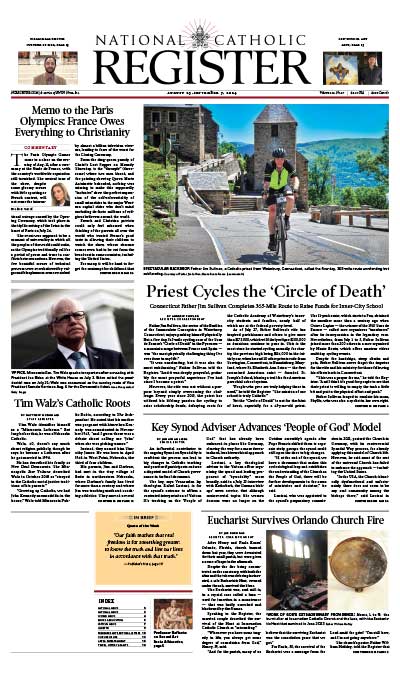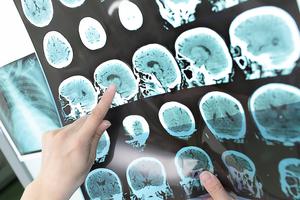The Mystery of Consciousness: New Study Challenges ‘Brain-Death’ Narrative
COMMENTARY: Contemporary Western cultures insist consciousness resides exclusively in our brains, but an abundance of recent scientific research indicates otherwise.

The startling findings of a new scientific study, indicating that many patients in so-called “vegetative states” actually remain conscious, confirm that the brain is a curious organ.
It is even more curious when we look into how different cultures throughout human history have understood it. The ancient Egyptians, for instance, thought that the brain performed the relatively mundane task of cooling the blood. Indeed, when they mummified the body after death, they discarded the brain as apparently unimportant for the afterlife.
Contemporary Western-style cultures over the last several centuries have a quite different understanding of the brain. This understanding has been shaped by a secular European Enlightenment, which imagines us as individualistic “thinking things” — especially after the wildly influential claim of the philosopher Renee Descartes: “I think therefore I am.”
Contrary to the imagination of the ancient Egyptians, we very often imagine ourselves as existing in or as our brains. All other body parts could be exchanged, but in some sense we are our brains. Sometimes this view is felt so hard that the famous Western philosophical thought experiment “What if I were a brain in a vat on Mars?” is something we can entertain.
Indeed, in our age of transhumanist speculation, some actually believe that we can upload the information from our brains into a computer and later download the information into a robot or another body and that information would be “us” in some sense.
There are lots of problems with this perspective, but here may be the most important one: The best neurologists and philosophers of mind have spent several decades trying to find the center of consciousness in the brain — and come up empty. Indeed, so dramatic has the failure been to find consciousness in the brain that some philosophers — like the great Daniel Dennett (who recently passed away) — have even made the absurd suggestion that human consciousness must be an illusion. How telling is it that some philosophers are willing to deny a reality that is most present and obvious to us in order to preserve the truth that we are our brains.
Another way in which our Western brain-centric imagination plays out is in how we evaluate individuals who have had massive and catastrophic brain injuries. Many of these injuries are ill-defined; and for decades, many clinicians would simply lump nearly everyone in this group as in a so-called “vegetative state.” This is not only an offensive description (no living human being is a vegetable), but a problematic category in its own right. Indeed, the received wisdom and common sense of Western clinicians was that due to the radical nature of the brain injury, patients in such a state must not be conscious.
This was revealed quite dramatically in the famous case of Terri Schiavo — one in which many argued that her being in a so-called vegetative state meant that she must not be conscious. Indeed, her husband put on her gravestone that she had “departed this earth” when she had her catastrophic brain injury and that she was “at peace” when she was denied food and water until she died.
But in 2006 something astonishing was revealed. A study showed that, when using an fMRI machine, which looks at the brains of folks deemed to be in a so-called vegetative state, a significant percentage were actually conscious and could even answer personal Yes-or-No questions correctly. The findings of this groundbreaking study were not as widely circulated as they should have been, but nearly all of those who became aware of it and what it meant were shocked — for they understood much of the received wisdom about the brain and consciousness was destabilized by what it showed.
In 2015, another groundbreaking event took place with the publication of Rights Come to Mind. Reflecting the research of the great physician and bioethicist Joseph Fins, this book revealed overwhelming evidence that even those in a so-called vegetative state who showed no signs of consciousness could benefit from medical therapies. Indeed, after such therapies, some of these folks with massive, catastrophic brain injuries actually regained consciousness or regained the ability to show others that they were conscious. Once again, not enough people have really wrestled with Fins’ findings, but many of those who have done so agreed with his call for a new civil-rights movement to show the value of those with catastrophic brain injuries.
And now with The New York Times article and other media coverage last month, these facts may actually come to be more widely known. Medical teams at six research centers asked questions of 241 unresponsive patients with catastrophic brain injuries. A full 25% showed evidence of consciousness. If we do the math on this, one of the authors suggested that 100,000 people may well fall into this category in the United States alone.
That such a study has now received such public attention means that our Western understandings of the brain and consciousness may now finally come under some serious and sustained criticism. And perhaps such criticism can actually open the conceptual space in our imaginations for us to engage some alternative understandings and give them due consideration. Indeed, philosophers like Alva Noë — author of the important book Out of Our Heads: Why You Are Not Your Brain and Other Lessons from the Biology of Consciousness — suggest that consciousness may be a product of the entire living human organism in the context of its environment.
Such views actually have deep resonances with a Catholic understanding of the soul. The soul is not like a ghost in the machine that lives in or inhabits a certain part of the body and sort of floats up to heaven upon death. Unlike that kind of dualistic view, the soul in a Catholic understanding is the form of the body — the animating spiritual principle of the entire living human body. And if the soul is intimately related to human consciousness, then the idea that consciousness does not reside in the brain would pose exactly zero problems for Catholics. It would also explain why people with catastrophic brain injuries may still be conscious — a state of affairs with which we, again, are finally being called to wrestle.
Finally, let us address a recent claim from a study group organized by the leadership of the Pontifical Academy for Life in light of all this. This study group was apparently concerned with moving the Catholic moral theological needle toward refusing food and water to people who are deemed to be in a so-called vegetative state. There are obviously deep problems with this on the merits of the arguments, but the most fundamental problem might be the following: The study group failed to respond to the obvious signs of our times. Such signs include not only the dramatic and ongoing slouch toward aiming at death by physician-assisted suicide and euthanasia, but these new and very important findings about the deeply mysterious realities of the brain and consciousness.
The signs of the times are not calling us to find ways to discard these populations with catastrophic brain injuries. On the contrary, this moment is calling us to mount a new movement in favor of their basic humanity and civil rights.
- Keywords:
- brain death
- vegetative state
- consciousness
















